Granite
Type of resources
Available actions
Topics
Keywords
Contact for the resource
Provided by
Years
Formats
Representation types
Update frequencies
-
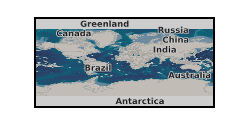
This dataset is used and fully described/interpreted in the paper: Passelegue, F. X., N. Brantut, T. M. Mitchell, Fault reactivation by fluid injection: Controls from stress state and injection rate, submitted to Geophys. Res. Lett. Text files contain raw and processed data. Mechanical data are raw. Load needs to corrected (offset) from piston friction, measured at the beginning of each run before the hit point. Axial displacement is converted into sample shortening by correcting the load from machine stiffness, which is equal to 480 kN/mm (calibrated on Mon. 14 Mar. 2016). Data include a set of elastic wave first arrival times, obtained from time of flight measurements using an array of piezoelectric transducers and the cross-correlation method detailed in Brantut (2015) (see reference above). Two separate files correspond to mechanical data from experiments conducted at 50 and 100 MPa confining pressure (""mech_Pc=???MPa.txt""). One file (""sensors.txt"") contains the initial positions of each piezoelectric transducer. Files named ""wave_?_Pc=100MPa.txt"" (?=1,2,3 or 4) contain time series of arrival times during the four injections conducted at Pc=100MPa. Each column consists in the time-of-flight between a given pair of sensors (x->y, where x is the index of source sensor, and y is the index of the receiver sensor, as per their numbering in the ""sensors.txt"" file.) In all the data files, the first column corresponds to a common time basis, in seconds.
-
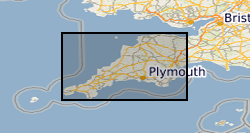
Publication and associated data from NERC Grant - NE/L001896/1. Published Paper, Andersen J, Stickland RJ, Rollinson GK, Shail RK. (2016) Indium mineralisation in SW England: Host parageneses and mineralogical relations. Ore Geology Reviews, volume 78, pages 213-238, DOI:10.1016/j.oregeorev.2016.02.019.
-
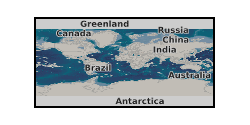
We undertook U-Pb analysis - both high precision ID-TIMS and high spatial resolution LA-MC-ICP-MS – to determine the age of the Wensleydale Granite. This was done in order to resolve the ambiguity surrounding an earlier (1974) Rb/Sr age determination.
-
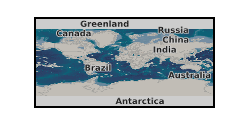
Data recorded during triaxial rock deformation experiments of Westerly granite in the presence of pressurised pore fluids (water). Data consists of mechanical data (load, displacement, confining pressure) and pore pressure data (up- and downstream pore pressure, upstream intensifier volume, four pore pressure transducers mounted on sample) for two experiments, recorded at low and high acquisition frequencies. Also contains .h5 files with all ultrasonic waveforms (active surveys and acoustic emissions). Dataset complementary to dataset ID165485 . Contains all data necessary to evaluate the results presented in the paper entitled: 'Rupture and afterslip controlled by spontaneous local fluid flow in crustal rock' by Aben and Brantut, submitted to Geophysical Research Letters, and available at arXiv (arXiv:).
-
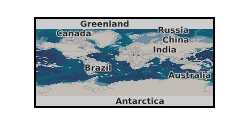
Data recorded during hydrostatic pressurisation and triaxial rock deformation experiments of Westerly granite and Darley Dale sandstone. Data consists of mechanical data (load, displacement, confining pressure) and pore pressure data (up- and downstream pore pressure, upstream intensifier volume, four pore pressure transducers mounted on sample). Contains all data necessary to evaluate the results presented in the paper entitled: 'Fluid pressure heterogeneity during fluid flow in rocks: New laboratory measurement device and method' by Brantut and Aben, submitted to Geophysical Journal International, and available at arXiv (arXiv:2006.16699).
-
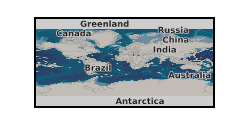
Data recorded during triaxial rock deformation experiments of Westerly granite in the presence of pressurised pore fluids (water). Data consists of mechanical data (load, displacement, confining pressure) and pore pressure data (up- and downstream pore pressure, upstream intensifier volume, four pore pressure transducers mounted on sample). Contains all data necessary to evaluate the results presented in the paper entitled: 'Dilatancy stabilises shear failure in rock' by Aben and Brantut, submitted to Earth and Planetary Science letters, and available at arXiv (arXiv:2101.10036).
-
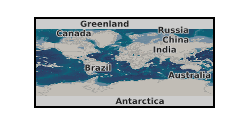
This collection comprises two time-series of 3D in-situ synchrotron x-ray microtomography (μCT) volumes showing two Ailsa Craig micro-granite samples (ACfresh02 and ACHT01) undergoing triaxial deformation. These data were collected in-situ at the PSICHE beamline at the SOLEIL synchrotron, Gif-sur-Yvette, France in December 2016 (standard proposal 20160434) and are fully explained in Cartwright-Taylor A., Main, I.G., Butler, I.B., Fusseis, F., Flynn M. and King, A. (in press), Catastrophic failure: how and when? Insights from 4D in-situ x-ray micro-tomography, J. Geophys. Res. Solid Earth. Together, these two time-series show the influence of heterogeneity on the micro-crack network evolution. Ailsa Craig micro-granite is known for being virtually crack-free. One sample (ACfresh02) remained as-received from the quarry until it was deformed, while the second (ACHT01) was slowly heated to 600 degC and then slowly cooled prior to deformation in order to introduce material disorder in the form of a network of nano-scale thermal cracks. Thus these two samples represent two extreme end-members: (i) ACfresh02 with the lowest possible (to our knowledge) natural pre-existing crack density, and so is a relatively homogeneous sample and (ii) ACHT01 with a thermally-induced nano-crack network imprinted over the nominally crack-free microstructure, and therefore has increased heterogeneity relative to ACfresh02. Each 3D μCT volume shows the sub-region of each sample in which the majority of damage was located and has three parts. Part one is reconstructed 16-bit greyscale data. Part two is 8-bit binary data showing individual voids (pores and micro-cracks) in the dataset after segmentation. Part three is 32-bit data showing the local thickness of each void, as in Cartwright-Taylor et al. (in press) Figures 4 and 5. Each part is a zip file containing a sequence of 2D image files (.tif), sequentially numbered according to the depth (in pixels, parallel to the loading axis) at which it lies within the sample volume. File dimensions are in pixels (2D), with an edge length of 2.7 microns. Each zip file is labelled with the sample name, the relevant letter for each 3D volume as given in Cartwright-Taylor et al. (in press) Tables 3 and 4, part 1, 2 or 3 (depending whether the data are greyscale, binary or local thickness respectively), the differential stress (MPa) on the sample, and the associated ram pressure (bar) to link with individual file names. The following convention is used: sample_letter_part_differentialstress_rampressure_datatype. Also included are (i) two spreadsheets (.xlsx), one for each sample, containing processing parameters and the mechanical stress and strain at which each volume was scanned, and (ii) zip files containing .csv files containing measurement data for the labelled voids in each volume. N.B. void label numbers are not consistent between volumes so they can only be used to obtain global statistics, not to track individual voids.
-

The dataset contains the raw timeseries of broadband magnetotelluric data collected at 10 sites around St Austell, Cornwall and one remote site in Bodmin Moor, Cornwall. Data were collected by BGS staff in March 2023 using Phoenix Geophysics Ultra-wideband MTU-5C systems.
-

Lineaments from the Land's End Granite, and immediately adjacent offshore areas, derived from the analysis of LiDAR, bathymetry and aerial photography as detailed in the publication: Yeomans, C.M., Claridge, H., Hudson, A.J.L., Shail, R.K., Willems, C., Eyre, M. and Harker, C. 2023. A single multi-scale and multi-sourced semi-automated lineament detection technique for detailed structural mapping with applications to geothermal energy exploration. Quarterly Journal of Engineering Geology and Hydrogeology, DOI:10.1144/qjegh2022-051. The analysis was undertaken to develop and evaluate methodologies for the assessment of potential fracture-controlled geothermal reservoirs.
 NERC Data Catalogue Service
NERC Data Catalogue Service